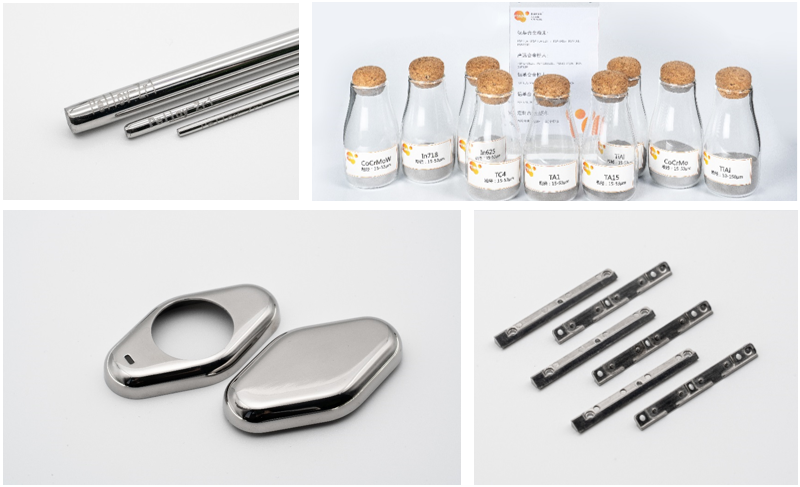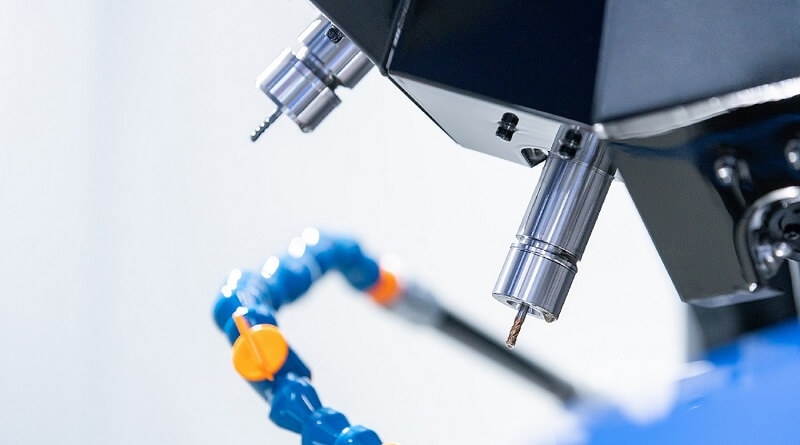Peshing Technology White Paper
The most researched on printing is the iron-based alloy amorphous alloy material, which has excellent soft magnetic properties and has a huge application market in power, electronics, new energy and other industries, such as amorphous inductors, amorphous motors, amorphous Transformers, new energy vehicle charging piles, etc. The overall efficiency of the first-generation amorphous motor is over 92%, the volume is 30% smaller, and the weight is also greatly reduced.
Research Status of Amorphous Alloy Powder Printing
The Selective Laser Melting (SLM) 3D printing (additive manufacturing) technology developed in recent years, due to the high energy density and high scanning rate of the configured fiber laser, provides rapid solidification conditions (cooling rate) for the micro molten pool. It can reach 10~4-10~6K/s, which is higher than the critical cooling rate 10~2-10~4K/s required by most amorphous alloy systems), which can effectively inhibit crystallization during the forming process, so it is expected to solve the problem. Forming difficulties of complex components of large-scale amorphous alloys. However, the extremely high heating and cooling rates during the preparation of amorphous alloys by SLM induce large temperature gradients, leading to severe thermal stress, which in turn induces microcracks in 3D printed components. So far, no crack-free Fe-based amorphous alloys have been successfully prepared. Although the Zr-based amorphous alloy system can suppress microcracks, defects such as incomplete surface and high porosity during solidification seriously reduce the quality of 3D printed components. In addition, the uneven temperature distribution during the SLM process will generate uneven thermal expansion and contraction, inevitably causing residual stress. Compared with crystalline metallic materials, amorphous alloys are more affected by thermal stress, defects and residual stress due to their inherent brittleness and low fracture toughness. However, the origin of microcracks in 3D printed amorphous alloy components, the form and mechanism of defects such as spheroidization and voids, and the distribution and evolution of residual stress are still unclear.
Jung et al. studied the effect of SLM process parameters on the microstructure evolution and the thermal and magnetic properties of the material. They found that the pores in the samples can be divided into regular spherical and irregular keyhole shapes. Irregular pores are caused by incomplete filling of the melt, while spherical pores are caused by the melt cooling too fast and trapped in the powder. The porosity can be completely eliminated by reducing the scan rate or increasing the laser power. The generation of cracks is caused by the uneven heat distribution of the hot laser processing layer and the bottom layer with relatively low temperature. When the melt is rapidly solidified, the shrinkage effect of the processed layer will inevitably lead to a higher temperature at the interface with the solidified bottom layer. The stress, while the lower ductility and fracture toughness of metallic glass, eventually caused the generation of cracks.
Laser three-dimensional forming technology LSF, the powder particle size used by the powder feeding mechanism is mostly 50-150μm. In some studies, a Fe57Co8Ni8Zr10Si4B13 amorphous alloy coating with a maximum thickness of 1.2 mm was prepared on the surface of a steel substrate by laser cladding, and the coating exhibited extremely high microhardness and excellent corrosion resistance. There are also studies and preparations of iron-based bulk amorphous alloys of Φ10*15, which inherit the amorphous structure of the raw material powder.
Problems in Amorphous Alloy Powder Printing
cooling rate
The difficulty of 3D printing technology to process amorphous metals is that, because powder bed-based laser 3D printing is a point-by-point discrete cladding deposition molding method, the laser heating area of each point is small, and the heat of the molten pool can be rapidly increased. Diffusion to the matrix; if the cooling rate of the molten pool is higher than the critical cooling rate required for the printed metal material to form an amorphous state, the melt does not crystallize during the condensation process, that is, an amorphous state is obtained; layer-by-layer deposition is Amorphous metal components with complex shapes and no size restrictions can be prepared. Therefore, the technical difficulty lies in judging whether the cooling rate satisfies the condition for a certain material to form an amorphous state.
Heat affected zone
In the process of forming metal components using laser 3D printing technology, the heat near the molten pool is mainly conducted outwardly through the fabricated metal component matrix, and the cooling rate of the laser molten pool mainly depends on the temperature gradient inside the metal component matrix. For amorphous metal components requiring high cooling rate, low matrix temperature gradient will make the heat of molten pool unable to diffuse out quickly, resulting in crystallization of molten pool in the process of condensation, resulting in the inability to obtain fully amorphous metal components, and reduce the performance of metal components. The metastable properties of amorphous alloys determine that the amorphous alloys are easy to be crystallized in the heat affected zone in the process of 3D printing bulk amorphous alloys, which hinders the application of 3D printing technology in the preparation of fully amorphous bulk amorphous alloys.
Uniformity of organization
The bulk amorphous alloys prepared by laser sintering of amorphous powder are prone to have residual pore-like defects. The existence of pore-like defects will significantly reduce the mechanical properties of bulk amorphous alloys. The results show that increasing the laser power and decreasing the scanning rate are beneficial to the reduction of defects and increase the density of 3D printed bulk amorphous alloys, but this will lead to the increase of the thermal relaxation time of amorphous phase and the formation of crystalline phase in the heat-affected zone. The heat affected area in the 3D printed bulk amorphous alloy is not uniformly distributed, and the crystal phase is generated in the heat affected area. The uneven distribution of crystal phase will also affect the performance of bulk amorphous alloy. Therefore, it is necessary to study and explore the optimal process parameters for specific amorphous alloys.
Residual Stress
The existence of temperature gradients in the laser sintering process of 3D printing bulk amorphous alloys causes a large amount of residual stress to be formed inside the bulk amorphous alloys. At the same time, the bulk amorphous alloys have the characteristics of high strength and poor plasticity. This leads to the formation of micro-cracks inside the molded parts, and even external cracks, which in turn will affect the properties of 3D printed bulk amorphous alloys. Some studies have done two low-power laser sintering after laser sintering to reduce stress, but this will cause delay in the heat-affected zone and increase the possibility of crystallization.
In addition, there are structural defects formed by 3D printing, material brittleness, incomplete surface during solidification, high porosity, etc.; there are only a small number of amorphous alloy systems suitable for 3D printing. Amorphous components are difficult to machine.
references:
1 Research progress of 3D printing bulk amorphous alloys, Lu Xiaoyang.
2 Research progress of 3D printing amorphous alloys at home and abroad, Zhongnuo New Materials.
3 Research progress on technology and properties of 3D printing amorphous alloy materials, Zhang Yuanjie.
4 Development status and existing problems of 3D printing amorphous alloys, Chen Yuanguang.




 CH
CH


